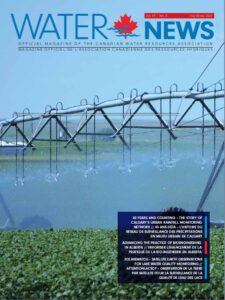Principles of Hydrology Short Course, Geography 827
Dr. John Pomeroy
University of Saskatchewan
Course Synopsis
The University of Saskatchewan Centre for Hydrology with the assistance of the Canadian Society for Hydrological Sciences (CSHS) is offering an intensive course on the physical principles of hydrology with particular relevance to Canadian and cold regions conditions. Factors governing hydrological processes in Canadian landscapes will be discussed including precipitation, interception, energy balance, snow accumulation, snowmelt, glaciers, evaporation, evapotranspiration, infiltration, groundwater movement and streamflow routing and hydraulics. These processes will be framed within the context of distinctly Canadian landscape features such as high mountains, glaciers, peatlands, prairies, agricultural fields, tundra, boreal forests, frozen rivers and seasonally frozen ground. Students will be exposed to an overview of each subject, with recent scientific findings and new cutting edge theories, tools and techniques. They will complete numerical and essay assignments to develop skills in problem solving and in synthesizing complex hydrological concepts. Students will emerge from the course with a deeper understanding of physical hydrological processes and how they interact to produce catchment water budgets and streamflow response.
The course is intended for hydrology and water resources graduate students and early to midlevel career water resource engineers, hydrologists, aquatic ecologists and technologists who are either working directly in hydrology and water resources or are looking to broaden their understanding of hydrological systems and processes. This physical science course is quantitative in nature and so a firm foundation in basic calculus and physics at the first year university level and some undergraduate hydrology or hydraulics training is strongly recommended.
The course will be delivered online M-F for two weeks starting Jan 11th. Each morning will have two 90 min. lecture sessions (0830-1000h, 1030-1200h MST). Each afternoon will have supplementary lecture material, introduction of assignments and an interactive Q & A session with the instructor of the morning’s lecture (1300-1500h). Lectures will be available as recordings and PDFs of slides after they are delivered.
All participants must apply for admission as a graduate student with the University of Saskatchewan if they are not already a graduate student at the U of S or another Canadian institution. For more information about the course and how to apply, go to: https://research-groups.usask.ca/hydrology/training-education/intensive-courses/geog-827.php



